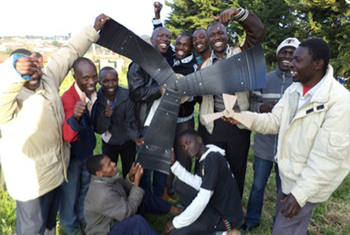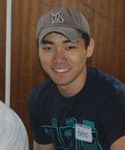Village Innovators provides Africans with resources to develop low-cost infrastructure solutions
“Engineers solve problems, and we want every community to have problem solvers.”
This was the idea behind the creation of Village Innovators, a startup not-for-profit founded by students at Rice. The social venture’s mission is to create homegrown technologies in East Africa by investing in people with the knowledge and resources to build humanitarian devices. A team of 16 undergraduates, mostly engineering majors, founded the organization in 2013 and later entered the OwlSpark Startup Accelerator, a program that offers mentorship and helps arrange investment opportunities for support.
“Low-cost, reproducible technologies such as wind turbines, water pumps and biogas generators can make a dramatic difference for everyday life in East Africa,” said Andrew Amis, the organization’s founding chief executive officer and a 2014 alum who majored in engineering and history at Rice. “Village Innovators exists to make technology creation democratic and humanitarian so every home and school can have basic provisions like electricity.”
Amis was inspired to create the organization after spending the summer following his freshman year teaching chemistry in a Tanzanian village school. In his classes, he would lead students through basic science experiments using inexpensive equipment such as plastic water bottles instead of beakers. The students enjoyed the experiments immensely, so much so that Amis wanted to come back and “share engineering with my former students.”
“I wanted to help my students create useful technologies using materials available in their village,” he said.
Amis’ vision quickly spread beyond the classroom, and in summer 2013, the team began pilot tests in Uganda and Kenya to prove their concept. Amis recruited Baek Ho Jang, his roommate at Martel College and a junior majoring in bioengineering, to help lead the organization. Jang serves as the organization’s chief operations officer.
“Baek Ho served in the South Korean military under a two-star U.S. general,” Amis said. “He brings phenomenal intelligence and professionalism to the organization.”
In Kenya, Village Innovators gave $650 to an impromptu group of young Kenyan adults, who constructed a wind turbine in three days. Today the windmill produces enough electricity to power several computers and lights in the local school.
According to Amis, regular electricity is too expensive for everyone except the village’s wealthy residents. He said it was very rewarding to see the project completed and benefiting people.
“Village Innovators showed that a hypothesis on paper could actually work,” Amis said. “Community development can be low-cost, grassroots and homegrown.”
In Uganda, Amis said, the response was so welcoming that he could arrive at schools unannounced and almost immediately begin conducting engineering challenges with the students.
Back in the U.S., Amis worked full time during the summer of 2013 with fellow students Ernest Chan and Lynn Gai in the OwlSpark Startup Accelerator. Chan helped produce the early engineering portfolio while Gai conducted pilot tests with students in Katy.
The organization offers packages to users, including cash for materials and “Technology Guides,” an electronic book series with do-it-yourself technology content. Rice engineering majors volunteer their free time to help design, prototype and create the engineering guides.
“We currently have prototypes for a wind turbine to generate electricity and a cooler to keep foods fresh,” Jang said.
Village Innovators is now working in Kenya, Tanzania and Uganda, and thanks to a new relationship with Peace Corps volunteers, they are working to expand their presence in remote villages around the world.
“In the coming weeks, we will release our open-source Technology Guides to 10 Peace Corps volunteers who will beta-test the model this summer,” Jang said. “What we do can work anywhere in the world, so long as there are people who want to create new things and a need for humanitarian technologies.”
In 2014, Amis and Jang hope to support 10 more village technology projects, just like the windmill in Kenya. “If we are successful, the sky is the limit to how big this could be,” Amis said. “We’re doing something distinctly new.”
For more information on Village Innovators, visit www.villageinnovators.org.





Leave a Reply